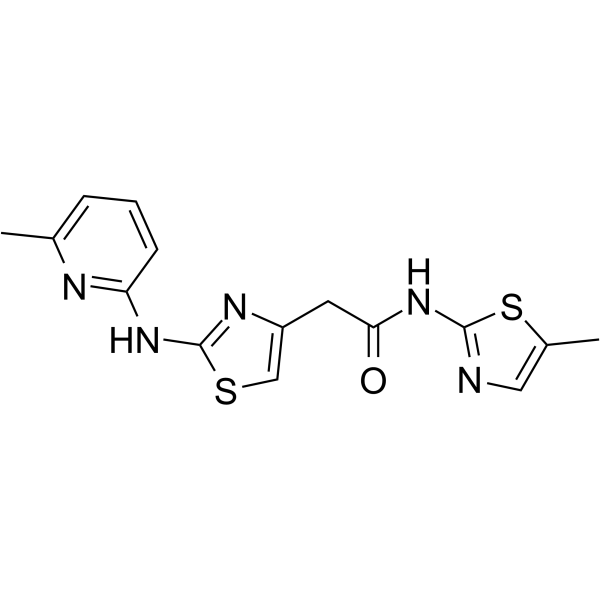
HQ461
CAS No. 1226443-41-9
HQ461( —— )
Catalog No. M28932 CAS No. 1226443-41-9
HQ461 is a molecular glue that promotes CDK12-DDB1 interaction to trigger cyclin K degradation, resulting in decreased CDK12 substrate phosphorylation, downregulation of DNA damage response genes, and cell death.
Purity : >98% (HPLC)
 COA
COA
 Datasheet
Datasheet
 HNMR
HNMR
 HPLC
HPLC
 MSDS
MSDS
 Handing Instructions
Handing Instructions
| Size | Price / USD | Stock | Quantity |
| 2MG | 49 | Get Quote |


|
| 5MG | 80 | Get Quote |


|
| 10MG | 140 | Get Quote |


|
| 25MG | 320 | Get Quote |


|
| 50MG | 537 | Get Quote |


|
| 100MG | 767 | Get Quote |


|
| 500MG | 1557 | Get Quote |


|
| 1G | Get Quote | Get Quote |


|
Biological Information
-
Product NameHQ461
-
NoteResearch use only, not for human use.
-
Brief DescriptionHQ461 is a molecular glue that promotes CDK12-DDB1 interaction to trigger cyclin K degradation, resulting in decreased CDK12 substrate phosphorylation, downregulation of DNA damage response genes, and cell death.
-
DescriptionHQ461 is a molecular glue that promotes CDK12-DDB1 interaction to trigger cyclin K degradation, resulting in decreased CDK12 substrate phosphorylation, downregulation of DNA damage response genes, and cell death.
-
In VitroWestern Blot Analysis Cell Line:A549 cells Concentration:10 μM Incubation Time:0-8h Result:Induces 50% reduction of CDK12 protein level at 8 h, and>8 fold reduction of the CCNK protein level at 4 h.
-
In Vivo——
-
Synonyms——
-
PathwayAngiogenesis
-
TargetCDK
-
RecptorApoptosis
-
Research Area——
-
Indication——
Chemical Information
-
CAS Number1226443-41-9
-
Formula Weight345.44
-
Molecular FormulaC15H15N5OS2
-
Purity>98% (HPLC)
-
SolubilityIn Vitro:?DMSO : 62.5 mg/mL (180.93 mM)
-
SMILESCc1cnc(NC(=O)Cc2csc(Nc3cccc(C)n3)n2)s1
-
Chemical Name——
Shipping & Storage Information
-
Storage(-20℃)
-
ShippingWith Ice Pack
-
Stability≥ 2 years
Reference
1.Dabir DV, et, al. A small molecule inhibitor of redox-regulated protein translocation into mitochondria. Dev Cell. 2013 Apr 15;25(1):81-92.
molnova catalog



related products
-
PHA-793887
A potent inhibitor of CDK2/5/7 with IC50 of 8/5/10 nM respectively; >6-fold less potency on CDK1/4/7.
-
SB1317 hydrochloride
SB1317 is an effective inhibitor of CDK2/JAK2/FLT3 (IC50: 13/73/56 nM).
-
CDK9 inhibitor HH1
CDK9 inhibitor HH1 is a novel potent, highly selective CDK9 inhibitor.



 Cart
Cart
 sales@molnova.com
sales@molnova.com


